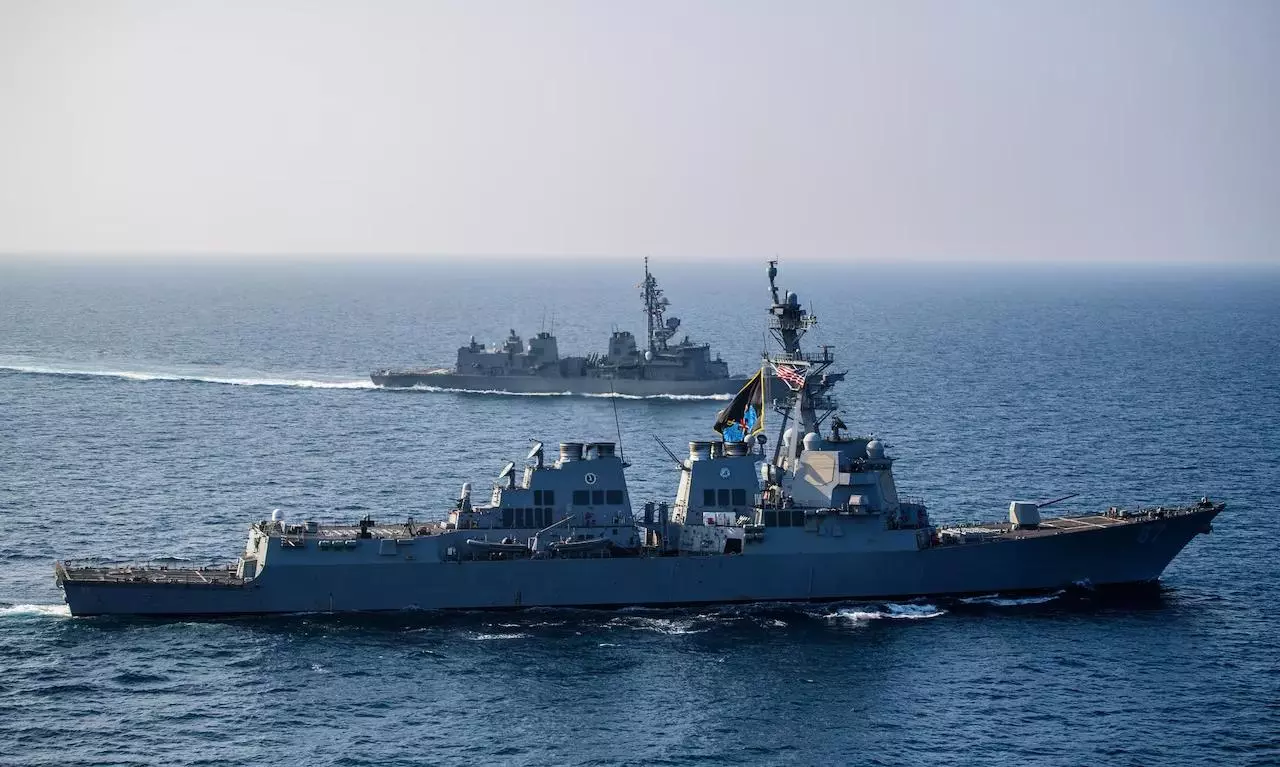#RedSeaConflict: Drone attacks continue, no ships hit
U.S. Navy shot down one drone, one anti-ship missile on Dec 28; MSC, Hapag continue to divert ships

The USS MASON (DDG 87) shot down one drone and one anti-ship ballistic missile in the Southern Red Sea that were fired by the Houthis between 5:45 - 6: 10 p.m. (Sanaa time) on December 28, according to the latest update from the U.S. Central Command.
“There was no damage to any of the 18 ships in the area or reported injuries. This is the 22nd attempted attack by Houthis on international shipping since October 19.”
MSC, which reported an attack on MSC United VIII in the Red Sea earlier this week, has decided to continue "diverting its ships via the Cape of Good Hope to maintain the safety of the crew, cargo, and ship. This diversion will mean an increase in transit time depending on the destination and/or transhipment point involved," the world's number one carrier said in an update.
MSC will implement a contingency adjustment charge (CAC) on all shipments, direct and transhipment, w.e.f. January 1, 2024 ranging from $1,000-$2,000, respectively, for dry/reefer containers, the update added.
German carrier Hapag-Lloyd, too, is avoiding the Red Sea and route ships through the Cape of Good Hope, and listed out latest schedule updates with an alert: "Please note that these responses are based on the current situation and may be subject to change. We will keep you updated with any developments."
"Vessel movement shows Maersk and CMA CGM continue to route vessels back through Suez with most others having a policy of going around Africa. But some differences can be seen on the actual vessel movements by AIS. Smaller niche carriers, both regional as well as those operating Asia to Russia services continue to operate through the Bab al-Mandeb," Lars Jensen said in his latest LinkedIn update.
Current situation, despite some announcements by few carriers on tentative restoring part of their vessel routings via Red Sea, is that huge capacity is moving via Cape New Hope, writes Paolo Montrone, Senior Vice President, Head of Global Trades, Kuehne + Nagel in his LinkedIn post.
Rates continue to rally
Asia-U.S. West Coast prices increased seven percent to $1,659/FEU, according to the latest update from Freightos. "Asia-U.S. East Coast prices were level at $2,505/FEU. Asia-N. Europe prices increased 11 percent to $1,621/FEU and Asia-Mediterranean prices increased five percent to $2,525/FEU."
Longer transit times have disrupted schedules and have carriers and port operators rushing to revise arrival slot allocations in an attempt to avoid the “vessel bunching” of multiple ships arriving at once that was one driver of port congestion and delays at Europe’s major hubs during the pandemic, the update added.
Though prices have not spiked just yet, carriers facing higher costs – estimated at as much as $2 million per round trip – for longer transits as well as the possible increase in demand will push ocean rates up significantly in January, Judah Levine, Head of Research, Freightos said in the update.



